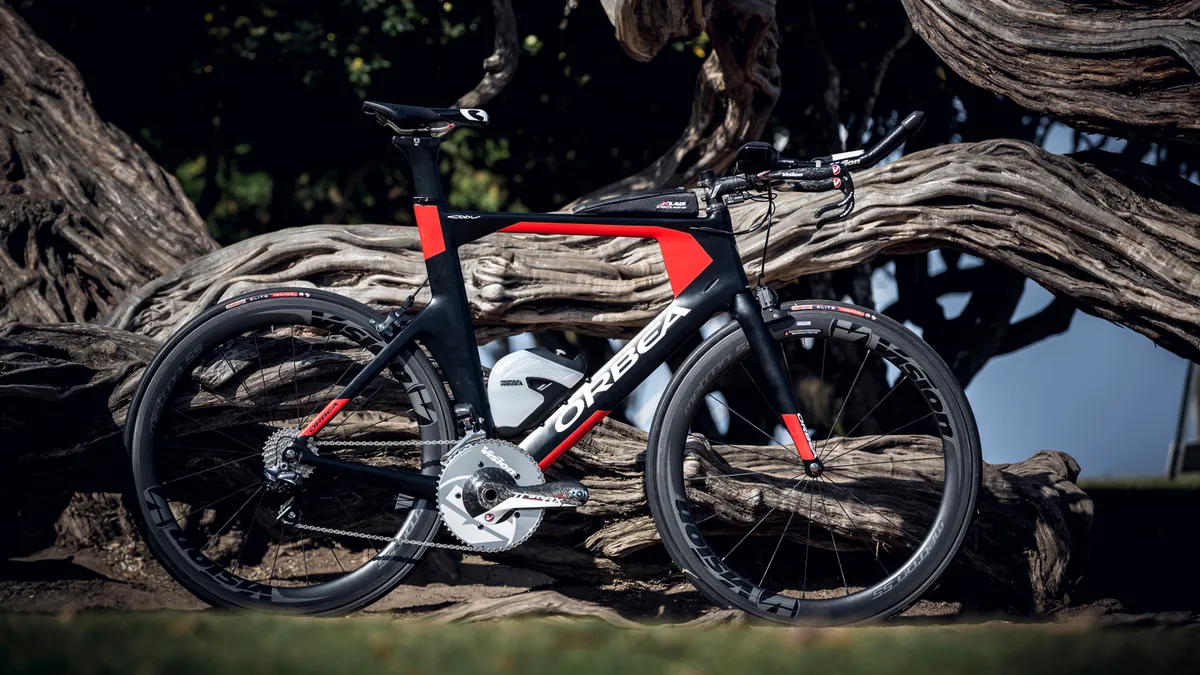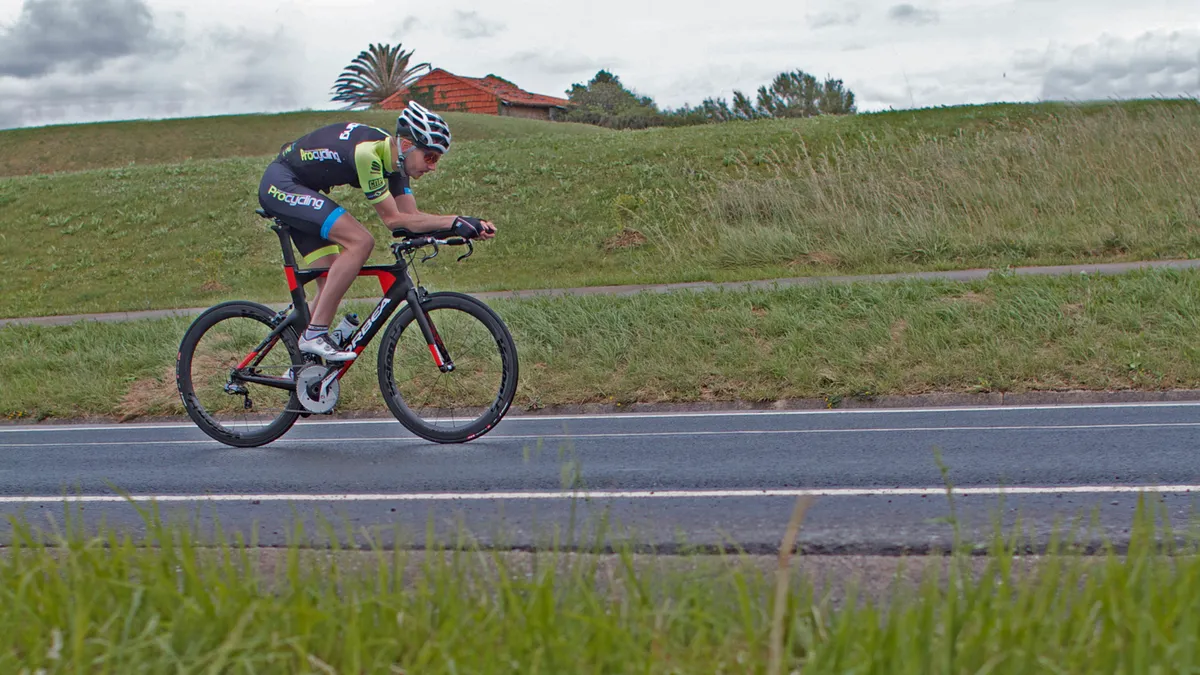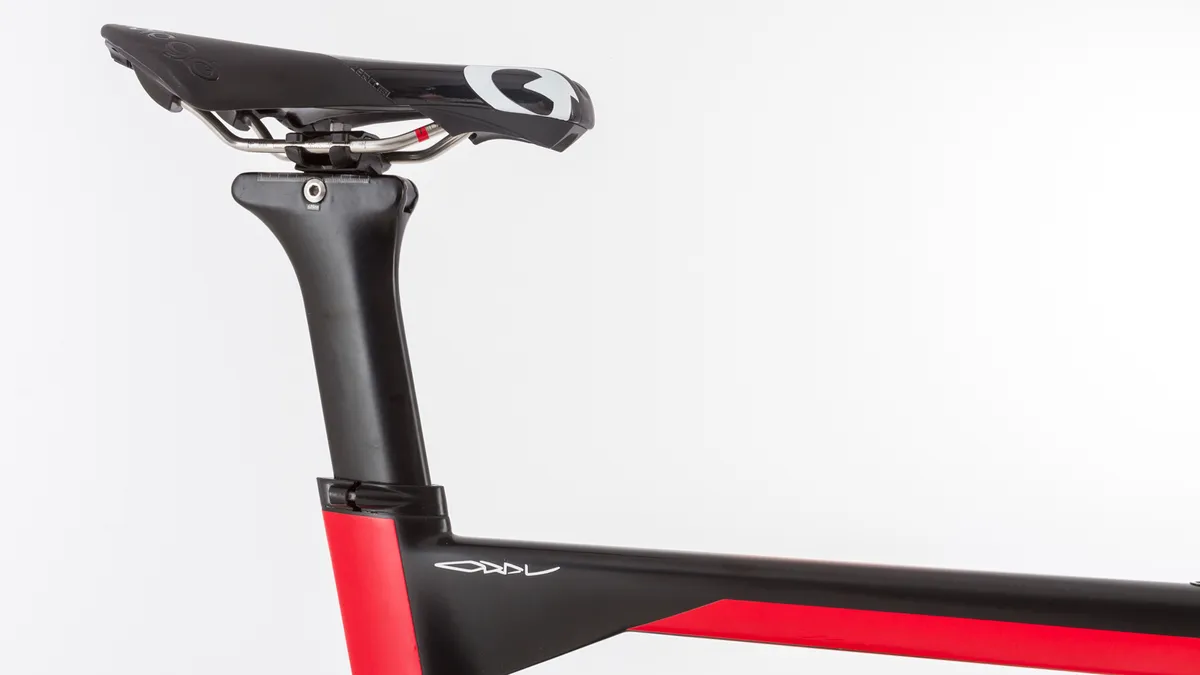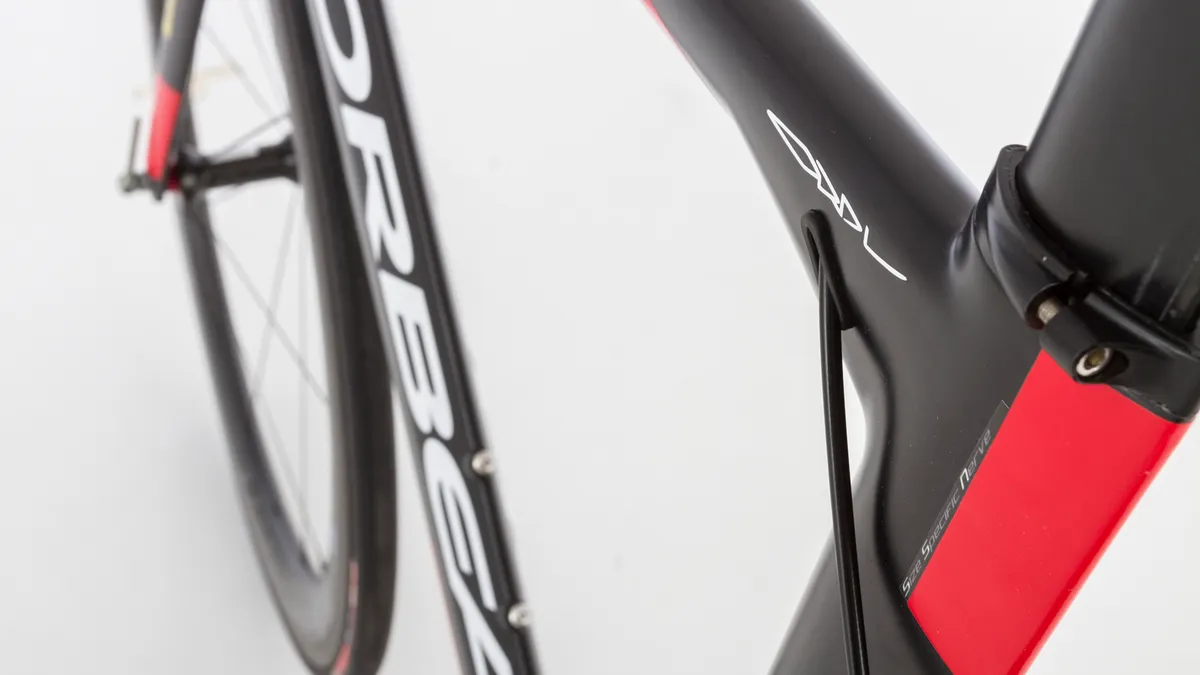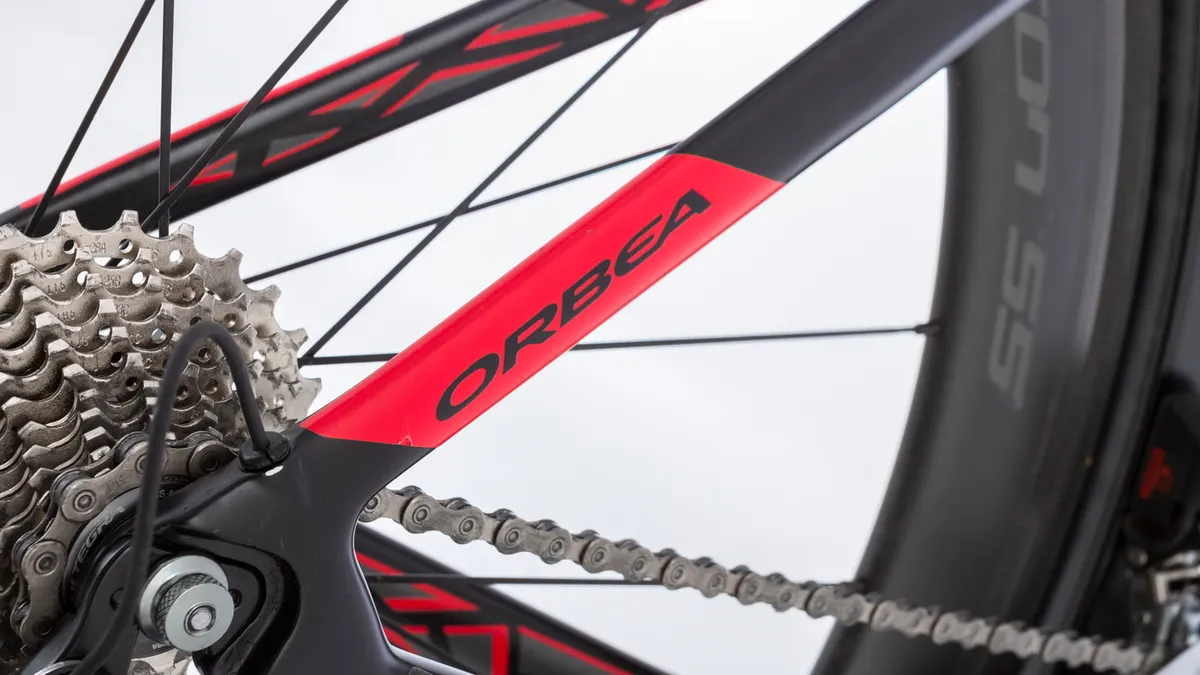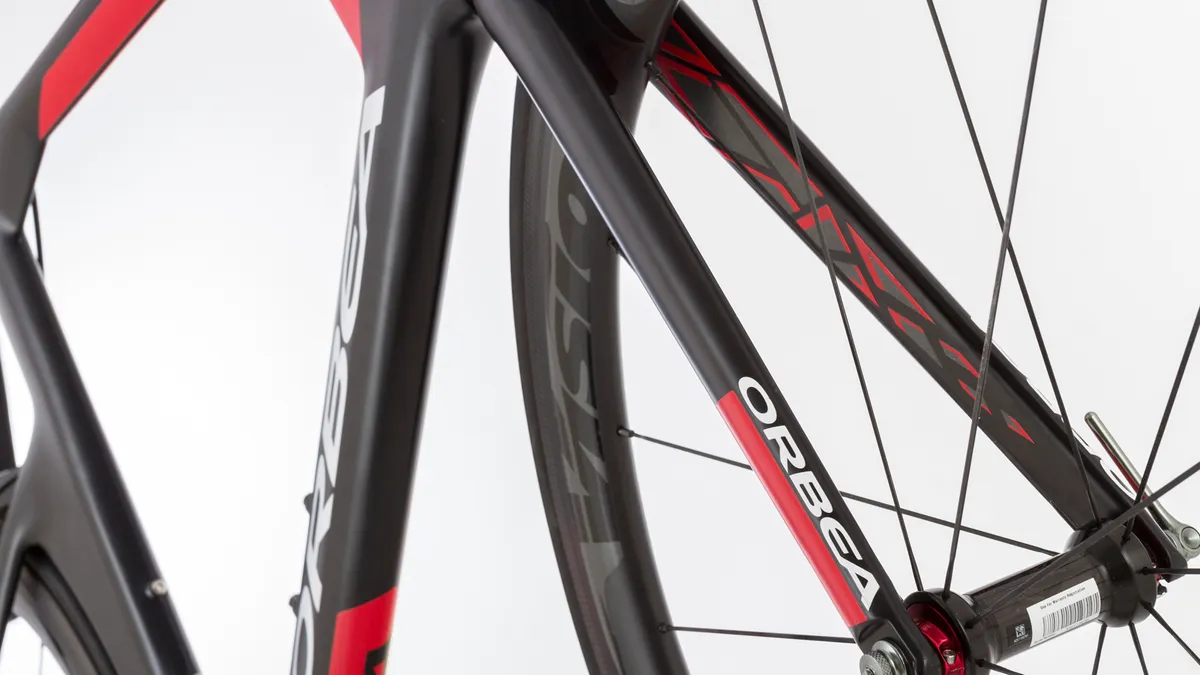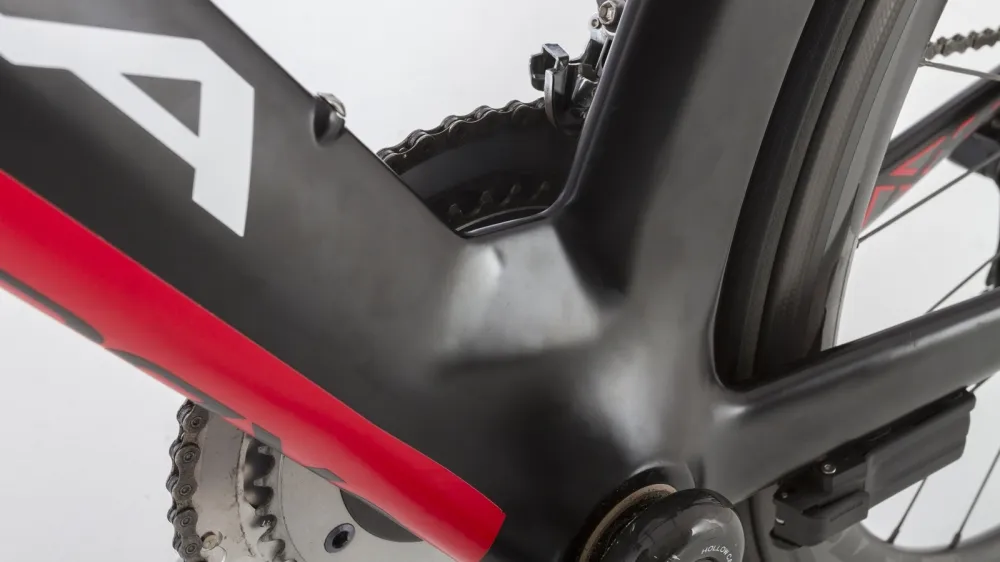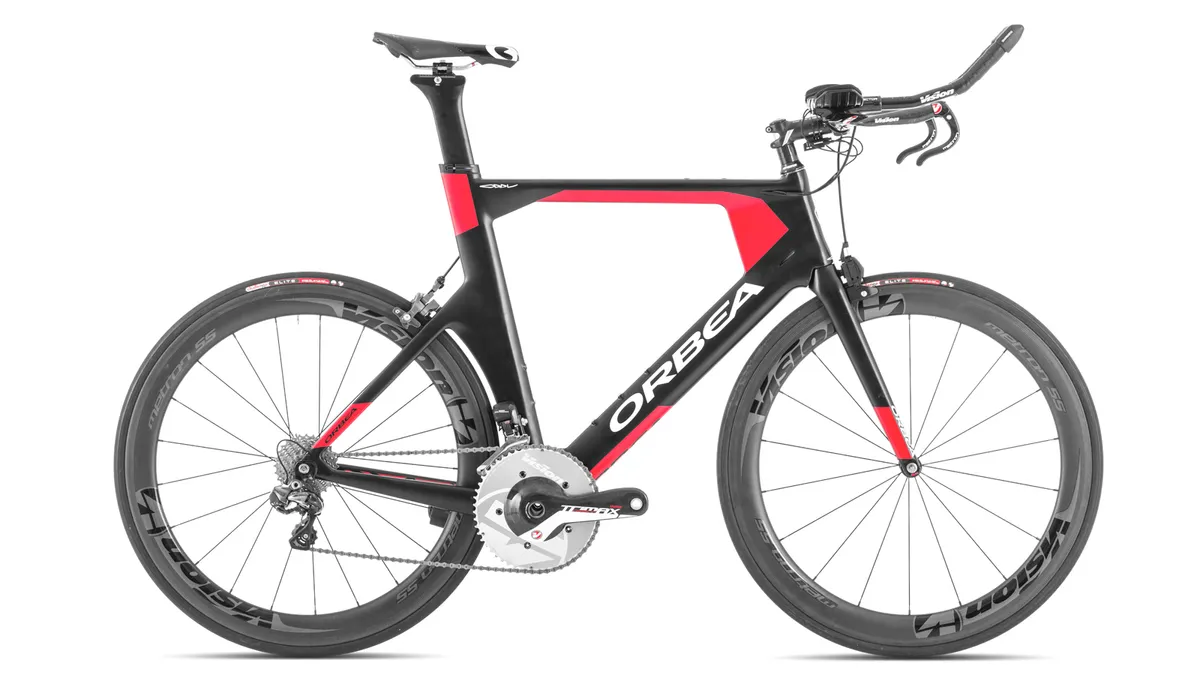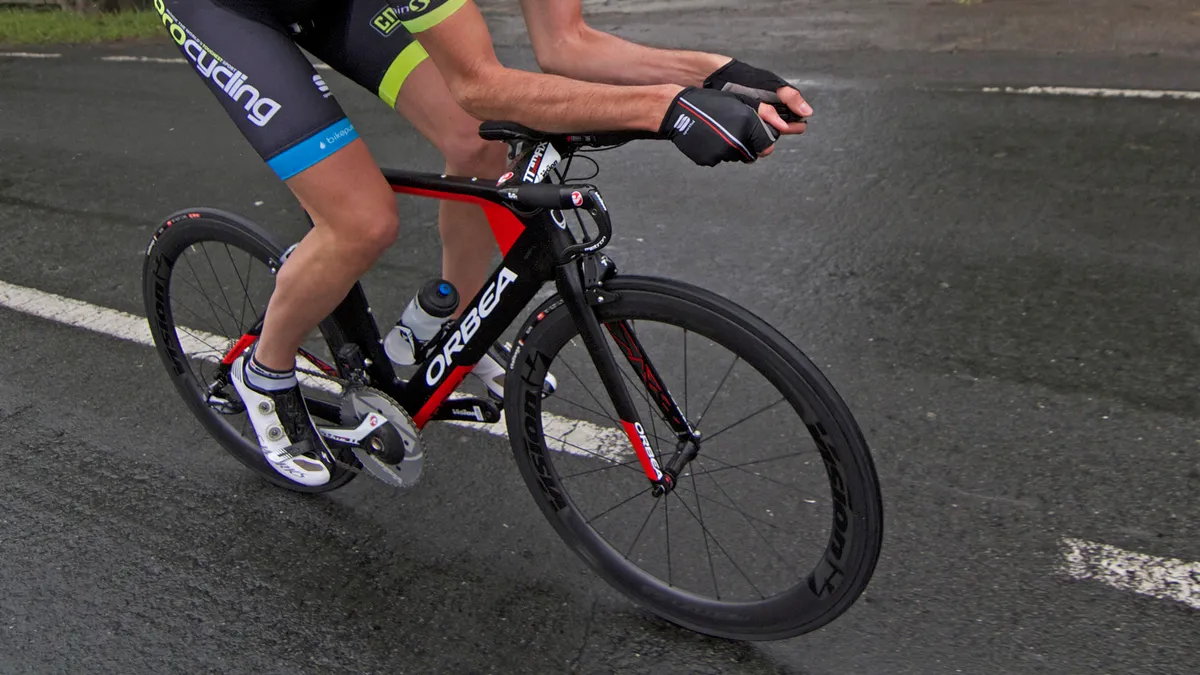The Ordu OME is Orbea's new ‘mass market triathlon’ aero bike. It replaces the Ordu Silver and sits beneath the radical Ordu OMR. Prices range from US$2,400 / £1,699, with Shimano 105 and alloy training wheels, to US$7,500 / £5,899 for a bike built with Shimano Ultegra Di2 and Vision Metron 55 carbon clinchers.
The Ordu OME was developed with help from sponsored athletes, including former UCI time trial world champion Amber Neben and Andrew Starykowicz, holder of the fastest bike split at the Ironman world champs in Kona and a rider who's notoriously hard on equipment.
Yet despite the pro influence, the phrase we heard more than any other at the launch event in Bilbao, Spain, was ‘user-friendly’.
This is a bike designed to be accessible and manageable for every rider, while also delivering the performance that the pros expect.
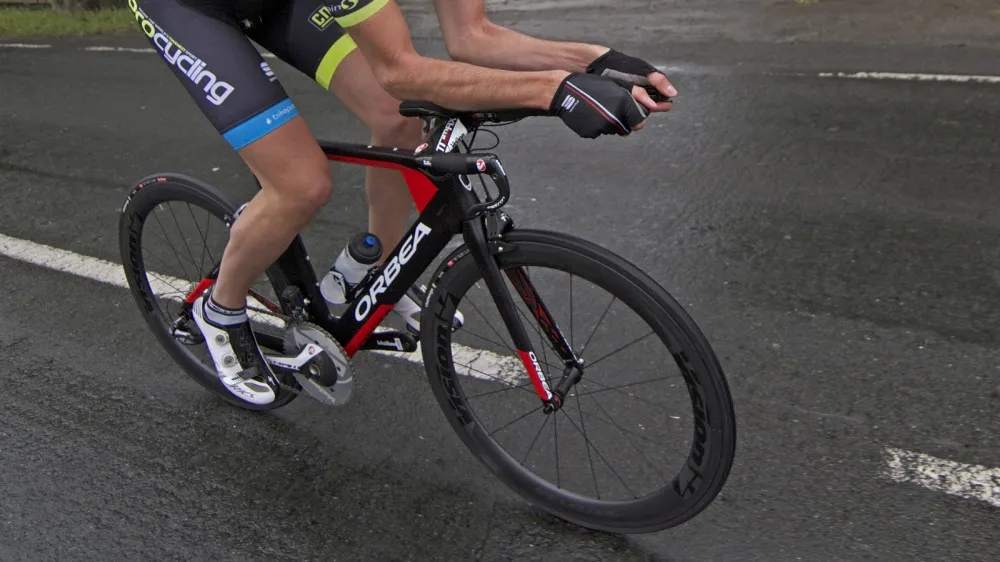
The Orbea OME is designed with amateurs in mind, but is also UCI-legal
Surprisingly, Orbea has made the Ordu OME UCI-legal for pro-level time trial competition. It already has the Ordu OMR – the low, aggressive looking bike ridden by their pro athletes – but the OMR is only UCI-legal with a special fork that you can't buy. It's also used by top triathletes but is too extreme for most amateurs.
Which is where the OME comes in; a bike aimed at amateur triathletes and time triallists but that is UCI-legal as standard even though Orbea does't have a pro road team and it has the OMR anyway. Confused? Yeah, us too. Some of the spec choices and ride characteristics suggest that the bike itself is also a bit confused.
Ride and handling: more long-distance tri bike than 10-mile TT hero
Setting up our top-spec M20i Ltd test bike was easy thanks to the broad range of adjustability in the saddle and cockpit and that very few tools were required.
That meant that we began our 30km test ride comfortable and, thanks to the smooth ride quality, stayed that way. The Vision base bar is stiff against hard efforts but never harsh and the arm pads are like sofas. The Zero Tri T2.0 saddle, with its full-length centre channel, isn't our personal favourite but most testers on the launch liked it.
With no reference points at all, it's impossible to gauge the Ordu OME's aero performance (though we did bag a couple of Spanish KOMs on a long drag climb that we rode hard).
Our short test-ride was enough to get a handle on the frameset's responsiveness though. The bottom bracket area and front triangle are fairly robust but we could clearly feel some flex during aggressive out-of-the-saddle efforts on steep climbs and from a standstill (to represent the start of a TT). Similarly, the steering character is good but the fork's poor torsional stiffness undermines the accuracy, and a technical descent wasn't much fun.
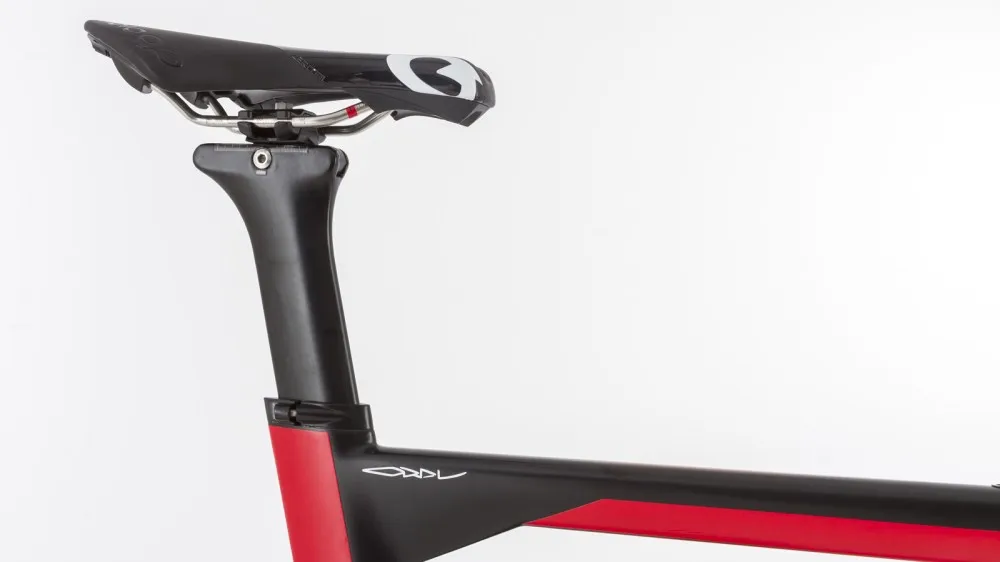
We weren't fans of the saddle, but most testers seemed happy with it
The Vision Metron 55 wheels are a highlight, their stiffness and stability shining through in the windy conditions. By the time we reached the coast, the wind was howling, but the Metrons only give a build-up of side pressure to lean against and never a heart-stopping snap across half the road like an old-school V-section rim. Braking is good in the dry and ok in the wet, with the usual carbon delay before anything happens.
One spec choice that we find really baffling is the Vision brake levers instead of Shimano. It saves money, but at the cost of the Di2 base bar shifters. The extra buttons are the main attraction of Di2 on an aero bike, especially for triathlon when you'd expect to spend a lot more time on the base bar than during a TT, particularly when climbing. Given the cost of the M20i Ltd and its position as a halo model, the cost-saving seems meaningless. We can’t help but feel it’s a daft mistake that will be very expensive (around £200) to remedy with aftermarket parts.
Frame: pro-level performance made accessible
Orbea's 'user-friendly' ethos is visible in a number of features. Most obviously, the OME is shorter and taller than the extreme OMR so it can accommodate less flexible riders in a position that's bearable for five hours or more on an Ironman bike leg.
The brakes are also conventional callipers mounted in the usual locations for easier setup and tuning, and the rear dropouts are semi-vertical for simple wheel fitting and there's clearance for larger 25c tyres. The chainstays and press-fit bottom bracket are compatible with all power meters and chainrings, including non-round options such as Osymetric in large sizes.The key numbers marking the OME's progress from its predecessor are an 18-watt saving at 30mph thanks to 16 percent less drag on average across a 0- to 15-degree wind angle range. It's stiffer, too: up by 17 percent at the BB and 16 percent in the rear triangle.
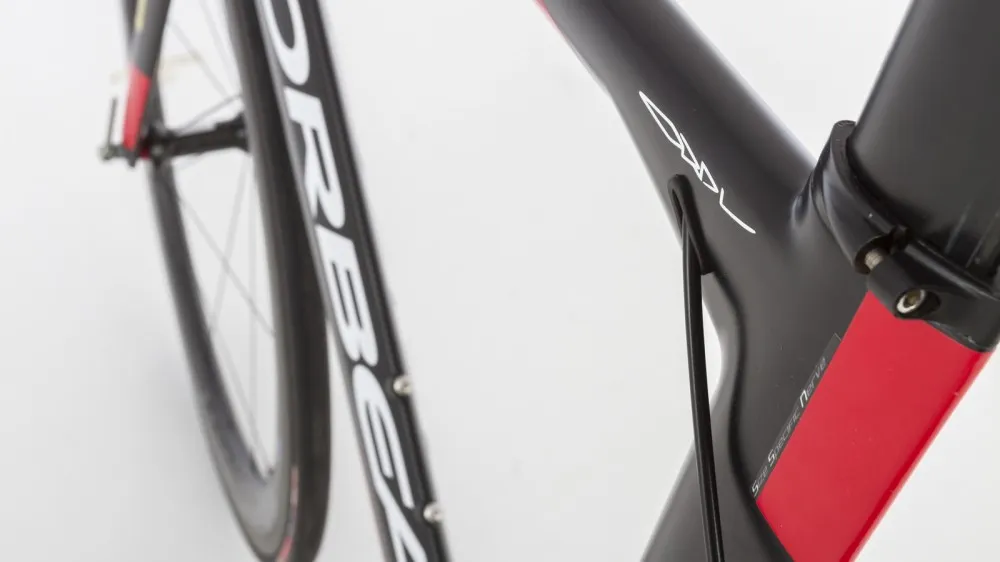
The reversed seatpost clamp is an aerodynamically tidy design and it's replaceable so if you strip a thread you won't have written off your frame
To save your legs for the run, the seat tube is at 78-degrees and the saddle clamp has a huge 6cm of adjustment so you can get the tip over the bottom bracket even with a tall saddle height. What's more, the cranks are downsized for each frame size in order to open the hip angle from the other end of the pedal stroke and give your glutes an easier time.
Despite all these triathlon-focused features (and the launch was at the Bilbao 70.3 Triathlon), the Ordu OME is UCI-legal. Road product manager Scott Warren told us that there was little performance to gain by making the bike non-legal and they wanted it to be an option for pro teams. The difference in aerodynamic performance between the OMR and OME is "single digit watts" at the best yaw angles, “and with the UCI-legal fork in the OMR it's even closer,” says Warren.
Equipment: top quality parts from Italian partners
The Ordu OME will be available in four sizes and six builds, or as a frameset. Full builds start with the 105-equipped M30; the M20 gets Ultegra; the M20i has Ultegra Di2; and the M20i Ltd adds high-end Vision Metron 55 carbon clinchers.
The OME uses finishing kit from Prologo and Vision/FSA, with whom Orbea have worked closely during development. All four variants use Prologo's new Zero Tri T2.0 saddle, Vision wheels, FSA or Vision cranks and a Vision alloy aero handlebar.
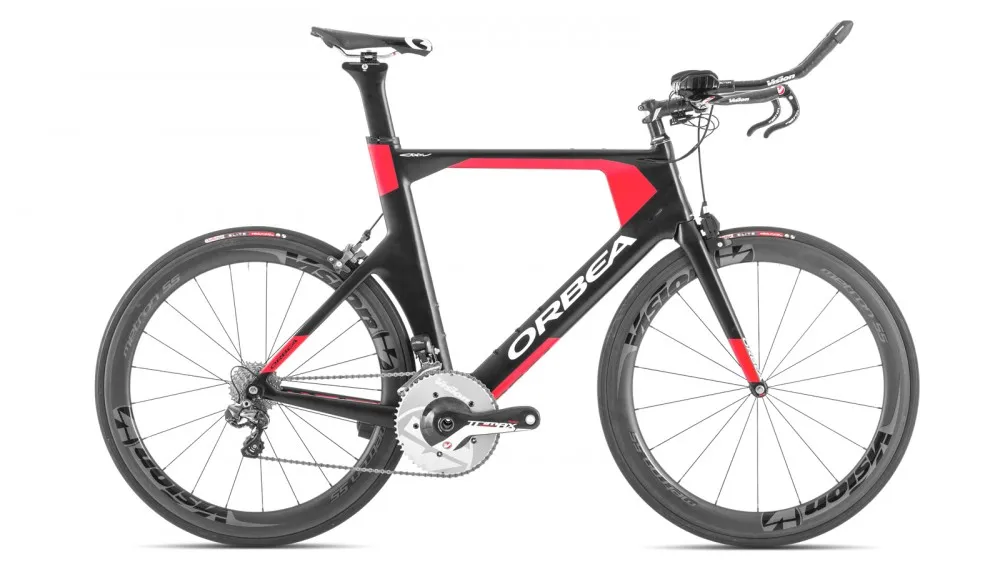
The Ordu OME has been built to be 'user-friendly'. The top spec M20i Ltd model features Shimano Ultegra Di2 and Vision Metron 55 carbon wheels
The M20i Ltd gets a carbon base bar. The maximum stack for both bars is 8cm under the pads. Because the extensions mount separately, the cockpit is widely and easily adjustable.
Both Di2 versions use Vision brake levers and so forego the extra shifters on the base bar. The integrated seatpost clamp is replaceable in case you strip a thread, another thoughtful touch that's been done with amateur racers in mind.
The sleek Tri Rig front brake on the M20i Ltd saves an extra 25g of drag compared to the FSA Gossamer Pros fitted to the lower models.
